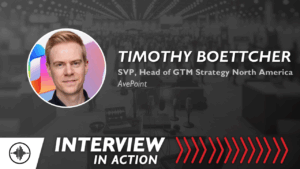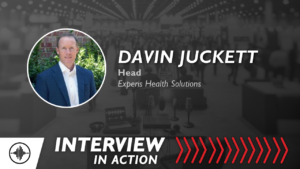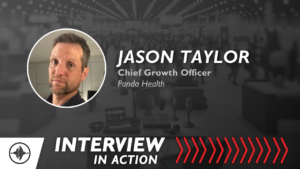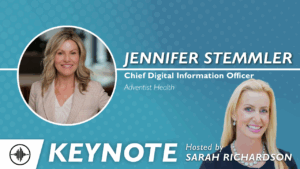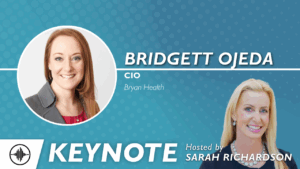 In today’s rapidly evolving healthcare landscape, embracing digital health is no longer an option – it’s a necessity. The benefits of integrating technology into healthcare are undeniable: enhanced patient care, streamlined operations, improved outcomes, and, when done well, higher satisfaction for all stakeholders with lower burnout for employees and staff. Given the benefits, you cannot afford to delay. It’s essential to create a fast track to digital health.
In today’s rapidly evolving healthcare landscape, embracing digital health is no longer an option – it’s a necessity. The benefits of integrating technology into healthcare are undeniable: enhanced patient care, streamlined operations, improved outcomes, and, when done well, higher satisfaction for all stakeholders with lower burnout for employees and staff. Given the benefits, you cannot afford to delay. It’s essential to create a fast track to digital health.
Before listing 10 actions you can take now, I want to address one factor that deserves special attention: vendor loyalty. Too much or too little is unwise. If you’re fortunate, you will view and work with your primary vendor as a partner, a key member of your team. That said, no primary vendor provides all the IT solutions you need. Every shop is multivendor. Even if you buy all your products and services from one vendor, they have integrated products and services from many other sources (vendors). Think of your vendor as a platform provider.
Embracing your vendor for as many solutions as possible is great ONLY IF they can deliver the products and services you need quickly and cost-effectively. If you wait for that vendor to develop a product or provide a service that you could get from another vendor, you decelerate the benefits realization that could potentially save lives, alleviate suffering, reduce expenses, increase revenues, and/or improve satisfaction.
In our mobile-centric world, it’s beneficial to deploy as much functionality as possible on a device carried by patients and their families and providers. If your vendor doesn’t provide the broadest range of functionality on a mobile platform, find a partner who can. Often, mobile platform providers can integrate broad functionality from a range of applications that uses your company’s brand and masks the family of technologies you’re using, enhances usability, improves care, and increases provider brand loyalty.
ACTIONS
- Adopt a Consumer-Oriented Attitude. Healthcare delivery is no longer limited to traditional healthcare providers. To compete with non-traditional participants and because it makes sense, you must become more consumer oriented. Make care convenient and affordable (think pricing transparency), efficient, personalized, mobile-enabled, and easily customized. Ensure your care teams mirror the makeup of your community and develop cultural competency. Do whatever you can to help patients and their families establish, preserve, or restore a sense of self-control.
- Enable Mobile Health (mHealth) Solutions. The ubiquity of smartphones opens doors to what should be your sponsored or provided mHealth applications that empower your patients to take control of their health. From medication reminders to fitness tracking, mHealth apps can enhance patient engagement and adherence to treatment plans. Let your technology help manage their care.
- Invest in AI and Machine Learning. You must use Artificial Intelligence (AI) and Machine Learning (ML) to assist in healthcare diagnostics, treatment recommendations, and predictive modeling. Integrate AI-powered tools to aid clinicians in producing documentation and making accurate and timely decisions. For AI in particular, discuss all the potential consequences of relying on AI for decision making. Use the same discipline, processes, and governance as you would for clinical trials.
- Harness the Power of Data Analytics. Data-driven insights are a game-changer, particularly in healthcare. Leverage advanced analytics to identify trends, predict outbreaks, and optimize resource allocation.
- Stay Agile and Open to Innovation. The digital health landscape is dynamic, with innovations emerging frequently. Maintain an agile mindset and be open to reviewing current investments and optimizing existing processes, often with little investment. Cautiously experiment with new technologies that can enhance patient care and operational efficiency.
- Embrace Telemedicine with Open Arms. Telemedicine has revolutionized patient-doctor interactions, offers convenience and accessibility like never before. If you have not already done so, invest in user-friendly telemedicine platforms that facilitate virtual consultations, remote monitoring, and secure data sharing. Prioritize patient privacy and ensure compliance with relevant regulations (such as HIPAA) to build trust in the digital healthcare ecosystem.
- Prioritize Data Security and Privacy. The digital health realm comes with cybersecurity challenges. Invest in robust data security measures to safeguard patient information from breaches and cyberattacks. Encryption, regular security audits, and staff training are crucial components of a comprehensive cybersecurity strategy.
- Foster Collaboration and Interconnectivity. Seamless communication among healthcare professionals is pivotal. Embrace collaboration tools and platforms that enable secure messaging, video conferencing, and real-time information sharing.
- Engage in Continuous Training. Digital health technologies evolve rapidly. Keep your staff well-trained to adapt to new tools and techniques. Organize workshops, webinars, and training sessions to ensure that everyone is up to speed with the latest developments.
- Promote Patient Education. Empower patients with digital resources that provide accurate medical information, lifestyle tips, and self-care guidance. Work with patients to instill a sense of personal accountability to improve their overall situation and reduce unnecessary visits to your facilities.
By embracing any or all of these strategies, you can help your organization get on the fast track to digital health. The journey will be challenging, but the rewards in terms of improved patient outcomes and operational excellence make every step worthwhile.
Below is a list of 10 digital health blogs I wrote that might be useful. Each takes about 3 minutes to read.
- Link: Digital Health – Is Healthcare Ready? Are You and Your Organization Ready? (Jan 2020)
- Link: Becoming a Digital Health System (Mar 2020)
- Link: Digital Health – Governance in a Digital Health System (Jul 2020)
- Link: Digital Health – The Role of Empathy and Understanding (Oct 2020)
- Link: Digital Health – Language and Comprehension (Oct 2020)
- Link: In a Digital World, The Human Elements are Essential (Feb 2021)
- Link: Digital Health – Planning for the Virtual Campus (May 2021)
- Link: Digital Health – A Practical Model for Change Management (Jul 2021)
- Link: Digital Health – Literacy Matters (Oct 2021)
- Link: Data Transformation Model – Deliberate Approach to Achieve Widespread Data Utility (May 2023)

